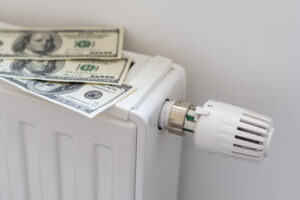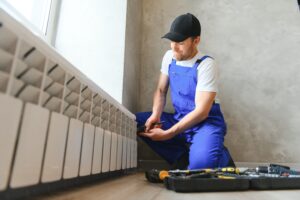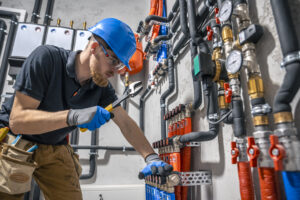The crisp fall air is a clear signal that winter is on its way. It’s the perfect time to prepare your home or business for the cooler months ahead, and that means getting your HVAC system in top shape. From ensuring warmth during chilly nights to maintaining energy efficiency, a well-prepared HVAC system is essential. In this post, we’re breaking down everything homeowners, property managers, and businesses need to know to prep their HVAC systems for the colder seasons. You’ll learn the ins and outs of HVAC systems, how to spot issues early, and tips for both DIY maintenance and professional service options.
Understanding HVAC Systems
Heating, ventilation, and air conditioning systems, commonly known as HVAC, are complex systems designed to provide comfort by regulating the temperature and air quality in your home or business. An efficient HVAC system can make all the difference when those cold months roll in. But how does it work?
At its core, HVAC systems are designed to maintain indoor comfort in various weather conditions, achieving this through the combined efforts of several components. The heating element, often a furnace or heat pump, provides the warmth needed during winter. Ventilation ensures good air circulation, removing stuffy air and introducing fresh air. Finally, the air conditioning aspect, though more relevant in summer, plays a role in preventing the air from becoming too dry during winter.
Each component in an HVAC system has a specific role. The thermostat acts as the control center, allowing you to set your desired temperature. The furnace works as the heart of the heating system, often fueled by gas, electricity, or oil. Air filters play a crucial role in maintaining air quality by trapping dust and allergens. Together, these parts need to work harmoniously to ensure your space remains cozy and comfortable even in the iciest conditions.
Signs Your HVAC System Needs Attention
Regular maintenance is vital for any HVAC system, but sometimes issues can arise unexpectedly. Knowing what to look out for can save you from an untimely breakdown. Here are some common signs that your system might need a closer inspection.
First, listen for unusual noises. While a slight hum is normal, banging, clunking, or whining could indicate a problem. These noises might suggest loose components or issues with the motor or fan. Next, if you notice uneven heating with some rooms warmer than others, this might point to ductwork issues or an inefficient system in need of a tune-up. Additionally, a sudden spike in your energy bill without an increase in usage is often a red flag that your system isn’t operating efficiently.
Another telltale sign is poor air quality. If there’s a noticeable increase in dust, or if household members are experiencing unexplained allergies, it might be time to change out the air filter or inspect the ventilation system. Addressing these issues early can prevent more severe problems down the line, ensuring your HVAC system runs smoothly throughout the colder months.
DIY HVAC Maintenance Tips
Taking a proactive approach to your HVAC maintenance can extend its lifespan and keep it running efficiently. Here’s a step-by-step guide to handling some basic maintenance tasks yourself.
Begin by checking and replacing air filters. A clogged filter restricts airflow, forcing your system to work harder to maintain your desired temperature. Ideally, filters should be checked monthly and replaced every 3 months, or more frequently if you have pets or allergies.
Next, inspect the outdoor unit, if applicable. Clear away any leaves, dirt, or debris that may have accumulated around the unit. Keeping the area clean ensures optimal airflow. Additionally, consider carefully cleaning the unit’s fins with a gentle spray of water, avoiding damage to the delicate components.
Lastly, check your thermostat settings. Ensure it’s set to heating mode and programmed to your preferred temperatures. If your thermostat allows, opt for a programmable or smart thermostat setting that adjusts based on your schedule, optimizing comfort and efficiency without manual adjustments.
Hiring Professional Services
While DIY maintenance can handle basic tasks, certain aspects of HVAC upkeep are best left to the professionals. Professional services ensure a thorough examination of your system, identifying and addressing potential issues before they escalate.
Scheduling an annual or biannual professional maintenance check is a wise investment. Technicians will perform essential tasks such as inspecting electrical connections, lubricating moving parts, and assessing the overall functionality of your system. They can also identify and rectify safety concerns, like carbon monoxide leaks or faulty connections, that you might miss.
Knowing when to call in a professional is crucial. If your system consistently fails to maintain the desired temperature, exhibits persistent strange noises, or you notice an unusual smell, it’s time to seek expert assistance. A professional’s keen eye can pinpoint issues that DIY efforts may overlook, ensuring your HVAC system operates safely and efficiently.
Energy Efficiency and Cost Savings
A well-maintained HVAC system is not only pivotal for comfort but also for reducing energy consumption and saving costs. Regular maintenance directly contributes to energy efficiency, benefiting both the environment and your wallet.
Proper HVAC care enhances efficiency by ensuring all components work seamlessly. When your system operates at peak performance, it requires less energy to achieve the same level of comfort. This decrease in energy usage results directly in lower utility bills, offering immediate financial relief.
In addition to regular maintenance, consider upgrading to energy-efficient components or systems if your current setup is outdated. Modern systems are designed with energy efficiency in mind, using advanced technology to reduce wasted energy while maintaining comfort levels. Over time, the savings from reduced energy bills can offset the initial investment cost, offering a win-win scenario for both your budget and the environment.
The Latest in HVAC Technologies
The HVAC industry is continually evolving, introducing new technologies that enhance performance and efficiency. Staying informed about these advancements can help you make educated decisions when upgrading or maintaining your system.
One notable innovation is the advent of smart thermostats. These devices learn your schedule and automatically adjust temperatures for optimal comfort and savings, all while being controllable from your smartphone. This technology makes it easier than ever to conserve energy without sacrificing comfort.
Another cutting-edge technology is variable refrigerant flow (VRF) systems. These systems offer energy-efficient heating and cooling solutions by adjusting the flow of refrigerant based on the specific needs of each space. VRF systems are ideal for businesses or larger homes seeking precise climate control with minimal energy waste.
Finally, enhanced air purification systems are gaining traction, especially in commercial spaces. These systems use advanced filtration methods to remove contaminants, improving indoor air quality and health. Incorporating such technologies can elevate the performance of your HVAC system, providing state-of-the-art comfort and efficiency.






